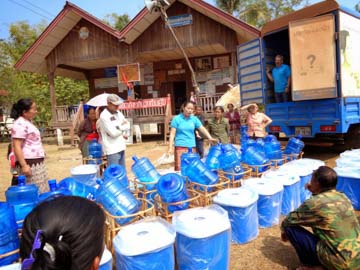
the original aluminium frame system with big holes + 1 connector and 1 4-pin comply with the 5 steps of climate action and are ClimatePartner certified
About the certification
06.2024
06.2025
1GIZF6
Product
About the product group
After 30 years of existence, THE ORIGINAL ALUMINIUM FRAME SYSTEM WITH BIG HOLES becomes ClimatePartner certified. This after years of reduction efforts like welding the corners instead of glueing non-About the company
The 5 steps of climate action
The following 5 steps are required for ClimatePartner certification:
Scroll down to see how the requirements were met.
Carbon footprints
A product carbon footprint (PCF) provides information about the impact of a product on global warming through its associated emissions. These carbon footprints take into account the materials and energy that goes into different phases of a product's life cycle, such as the extraction of raw materials that make up the product, production processes, transportation, and other supporting processes.
This carbon footprint calculation was completed in January 2024Carbon footprint (in CO₂ equivalents):
61.98 Kg CO₂
for 1 piece
This carbon footprint is based on the following product life cycle:
Cradle-to-customer plus end-of-life
- Extraction and pre-processing of raw materials and packaging
- Transportation from supplier to manufacturer
- Production of the final product
- Delivery of the product to the first customer
- Disposal processes for the product and its packaging
Reduction targets
Reduction targets are an essential part of a company's climate action strategy. By setting concrete targets, companies define the areas, scope, and timeframe for implementing reduction measures.*
Scope 1 and 2 emissions
This company has committed to reducing its emissions by
46.2%
Time period
2019 to 2030
Science-based target
Yes, matching the 1.5 °C ambition level
Scope 3 emissions
Scope 3 emissions included in this reduction target:
55%
Metric tonnes CO₂e per USD($) value-added
Time period
2019 to 2030
Science-based target
Yes, matching the 1.5 °C ambition level
Reduction measures
To meet their reduction targets, it is important for companies to plan and implement concrete measures to achieve effective climate action. This section shows you the reduction measures that have been implemented.*
Product-related reduction measures
All products that are ClimatePartner certified have at least one implemented reduction measure.
Product life cycle
Company-related reduction measures
This section shows you the reduction measures that the company has implemented throughout their operations.
2024
23%
of the total electricity consumption is self-generated green electricity*
Climate projects
This company financially contributes to certified climate projects during the certificiation period (1). This contribution is intended to accelerate collective efforts towards achieving global net-zero emissions and (3) supports the United Nations Sustainable Development Goals. Supported projects undergo regular audits by independent third parties to ensure transparency and accountability. However, this financial contribution is not included in the associated greenhouse gas (GHG) inventory nor considered towards meeting decarbonization goals (2). Therefore, it does not impact the carbon footprint of the certified product, company or service.
Number of projects supported:
2
Climate projects were financed for the following amount of emissions:
1,439.929 Kg CO₂ *
Climate projects supported

Clean drinking water, Countrywide-Laos

Climate project + tree planting, 1 t CO2 + 1 tree-International + Belgium
All climate projects at ClimatePartner fulfil strict criteria defined by widely-recognised international standards. Among other things, the projects are required to undergo regular independent monitoring and auditing.
Transparency
An essential part of a company's climate action journey is to make its ambition and achievements visible. The ClimatePartner label is a core component that businesses use to make their climate data and actions fully accessible and transparent to their customers.
About ClimatePartner certification
